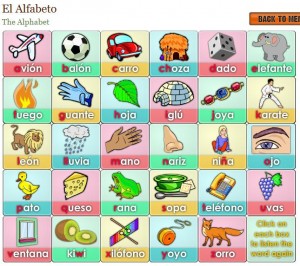 Spanish or Castilian is an Indo-European, Romance language that originated in northern Spain, and gradually spread in the Kingdom of Castile and evolved into the principal language of government and trade. It was taken most notably to the Americas and also to Africa and Asia Pacific with the expansion of the Spanish Empire between the fifteenth and nineteenth centuries.
Spanish or Castilian is an Indo-European, Romance language that originated in northern Spain, and gradually spread in the Kingdom of Castile and evolved into the principal language of government and trade. It was taken most notably to the Americas and also to Africa and Asia Pacific with the expansion of the Spanish Empire between the fifteenth and nineteenth centuries.
http://onlinefreespanish.com/aplica/news/01_18_09.htm
Today, 320 million people speak Spanish as a native language, making it the world’s fourth most spoken language in terms of native speakers after Chinese, Hindi, and English, depending on the sources. Mexico contains the largest population of Spanish speakers.
Spanish is growing increasingly popular as a second or third language in a number of countries due to logistical, economic, and touristic interest towards the many nations which chiefly use Spanish as the primary language. This phenomenon is most notable in Brazil, the United States, Italy, France, Portugal, and much of the Anglo sphere in general.
Naming and origin
Spaniards tend to call this language Español (Spanish) when contrasting it with languages, such as French and English, but call it castellano (Castilian), that is, the language of the Castile region, when contrasting it with other languages spoken in Spain such as Galician, Basque, and Catalan. This reasoning also holds true for the language’s preferred name in some Hispanic American countries. In this manner, the Spanish Constitution of 1978 uses the term castellano to define the official language of the whole Spanish State, as opposed to the other Spanish languages. Article III reads as follows:
“El castellano es la lengua española oficial del Estado. (…) Las demás lenguas españolas serán también oficiales en las respectivas Comunidades Autónomas…
Castilian is the official Spanish language of the State. (…) The other Spanish languages shall also be official in their respective Autonomous Communities…”
The name Castellano (Castilian), which refers directly to the origins of the Language and the sociopolitical context in which it was introduced in the Americas, is preferred in Argentina, Paraguay, Peru, Uruguay and Chile, instead of español, which is more commonly used to refer to the language as a whole in the rest of Latin America.
Some Spanish speakers consider Castellano a generic term with no political or ideological links, much as “Spanish” is in English.
In the 2006 census, 44.3 million people of the U.S. population were Hispanic or Latino by origin; 34 million people, 12.2 percent, of the population older than 5 years old speak Spanish at home. Spanish has a long history in the United States (many south-western states were part of Mexico and Spain), and it recently has been revitalized by Hispanic immigrants. Spanish is the most widely taught foreign language in the country. Although the United States has no formally designated “official languages,” Spanish is formally recognized at the state level in various states besides English; in the U.S. state of New Mexico for instance, 30% of the population speaks the language. It also has strong influence in metropolitan areas such as Los Angeles, Miami, San Antonio, New York City, and in the 2000s the language has rapidly expanded in Atlanta, Houston, Phoenix and other major Sun-Belt cities. Spanish is the dominant spoken language in Puerto Rico, a U.S. territory. In total, the U.S. has the world’s fifth largest Spanish-speaking population.
Article from: http://en.wikipedia.org/wiki/Spanish_language
Thanks,
OnlineFreeSpanish.com
A fun way to learn Spanish
Especially for kids of all ages.
facebook: freespanish
twitter: freespanish
youtube: onlinefreespanish
